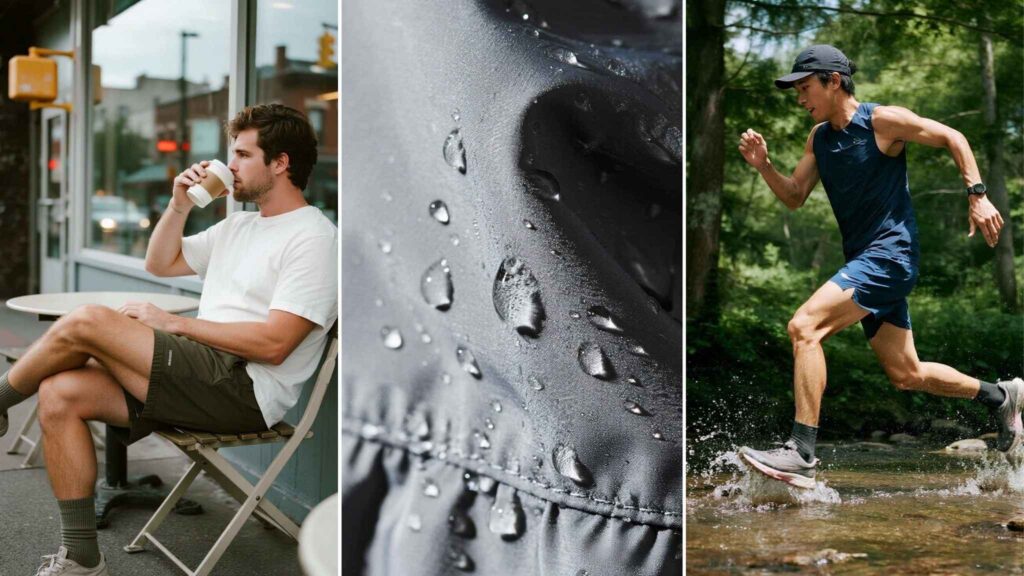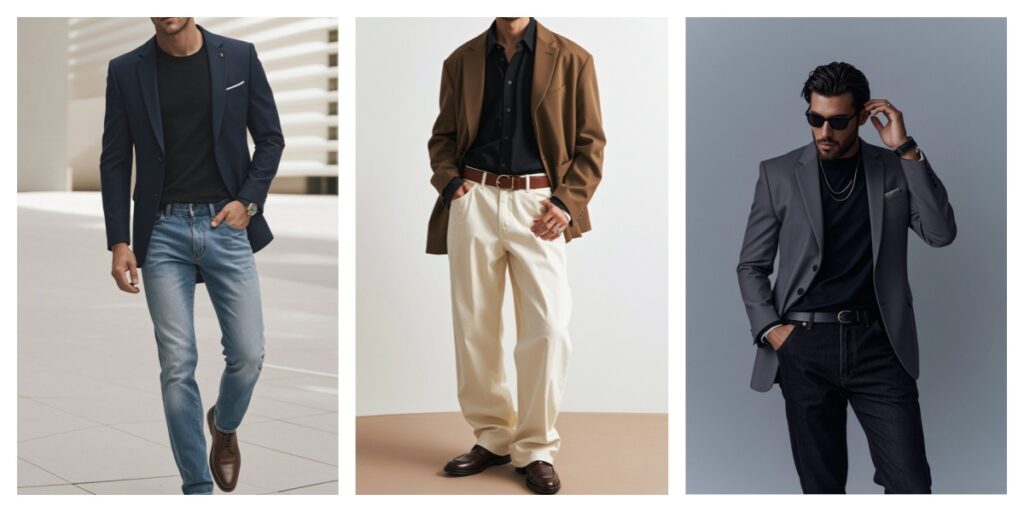Introduction
Nylon running shorts show up in starting corrals from Boston to Berlin, and for good reason: the fabric is almost feather‑light, dries in a flash, and shrugs off the daily grind of mileage. For men building a high‑performance wardrobe, they promise a simple equation—less weight plus quick evaporation equals faster, more comfortable runs. But do nylon shorts genuinely outperform their polyester, spandex‑blend, or even cotton‑hybrid rivals? This article weighs the advantages and drawbacks of nylon, compares it with other common materials, and offers practical style guidance so you can decide whether these ubiquitous shorts deserve a permanent spot in your rotation.
Benefits of Nylon Shorts for Runners
Nylon’s core appeal is its moisture‑management superpower. The polymer strands are hydrophobic, meaning sweat is pulled away from the skin and spreads across a broad surface area; evaporation happens quickly, helping regulate body temperature on tempo days and long runs alike. Ventilation is further boosted by modern ripstop or micro‑mesh weaves that let heat escape without compromising modesty.
Another plus is ultra‑low weight. Even mid‑priced nylon shorts hover around 80–120 g—barely noticeable when cadence picks up. Shedding grams might seem trivial until late‑race fatigue sets in; then, every ounce counts.
Durability rounds out nylon’s profile. The fiber’s naturally high tensile strength resists abrasion from repeated thigh rub, track falls, or the scuffing that comes from stashing a phone or energy gel in pockets. Unlike cotton, which pills, or certain thin polyesters that snag, nylon keeps a smooth handfeel run after run.
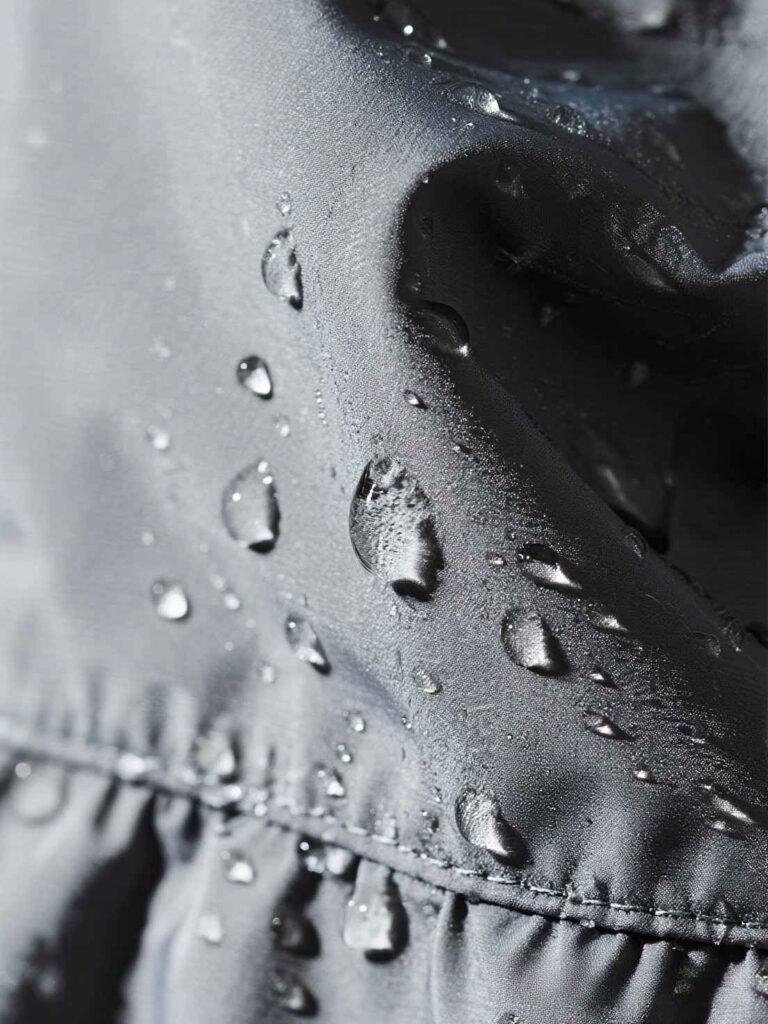
Drawbacks to Consider
Nylon is not without quirks. Stretch is limited compared with shorts woven with spandex (elastane). Although most running patterns rely on a relaxed cut, hill sprints, yoga warm‑ups, or deep strides can make non‑stretch waistbands feel restrictive. Some premium brands add 7–10 % elastane to solve this, but pure nylon models stay rigid.
Next is odor retention. Nylon is oleophilic—it likes oil—so trapped sebum can encourage bacterial buildup. On muggy summer loops, that means a dank smell can linger even after washing unless you use sports‑wash detergents or air‑dry thoroughly.
Finally, comfort depends on liner construction. Cheap inner briefs may chafe, ride up, or trap heat. If you prefer wearing your own compression shorts, look for a liner‑less design or one with a removable brief.
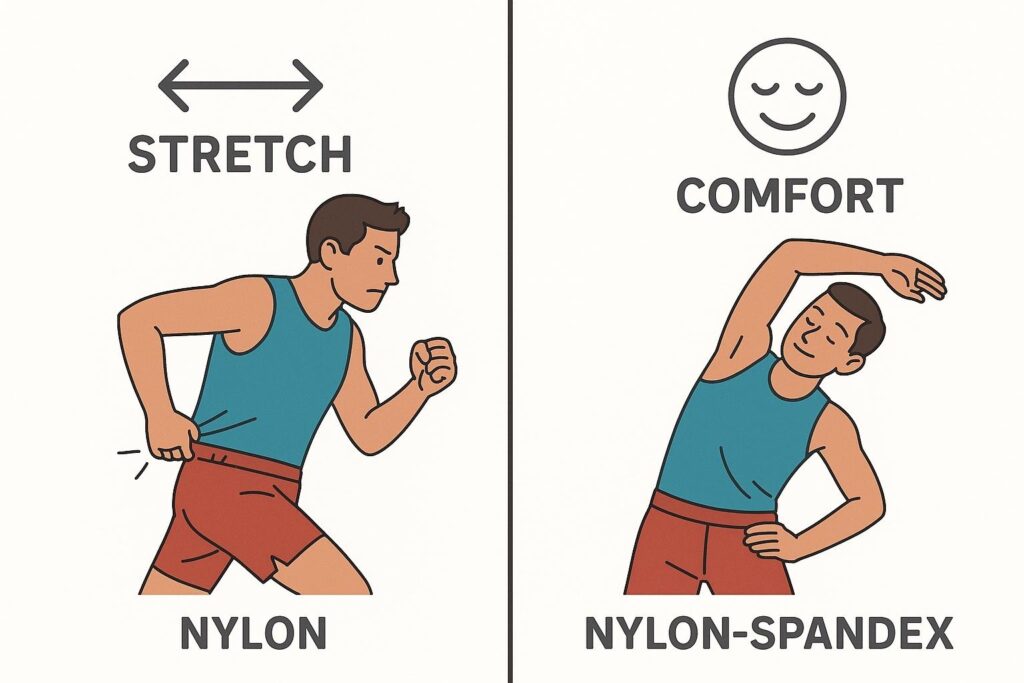
Nylon vs Other Common Running Short Materials
Polyester rivals nylon in wicking ability and often costs less. It dries almost as fast and can incorporate recycled fibers, but it pills sooner and is marginally heavier.
Cotton, though soft, absorbs up to 27 × its weight in water, turning heavy and clingy—fine for recovery walks but inefficient for distance efforts.
Spandex (Elastane)‑heavy blends deliver unrivaled stretch and next‑skin fit, perfect for compression shorts or tights. However, they trap more heat and can feel slick when saturated with sweat.
When pure speed and durability under varied weather matter, nylon edges out polyester and cotton. Yet for maximal flexibility—think track intervals requiring deep knee lift—nylon‑spandex blends or pure spandex pieces may win.
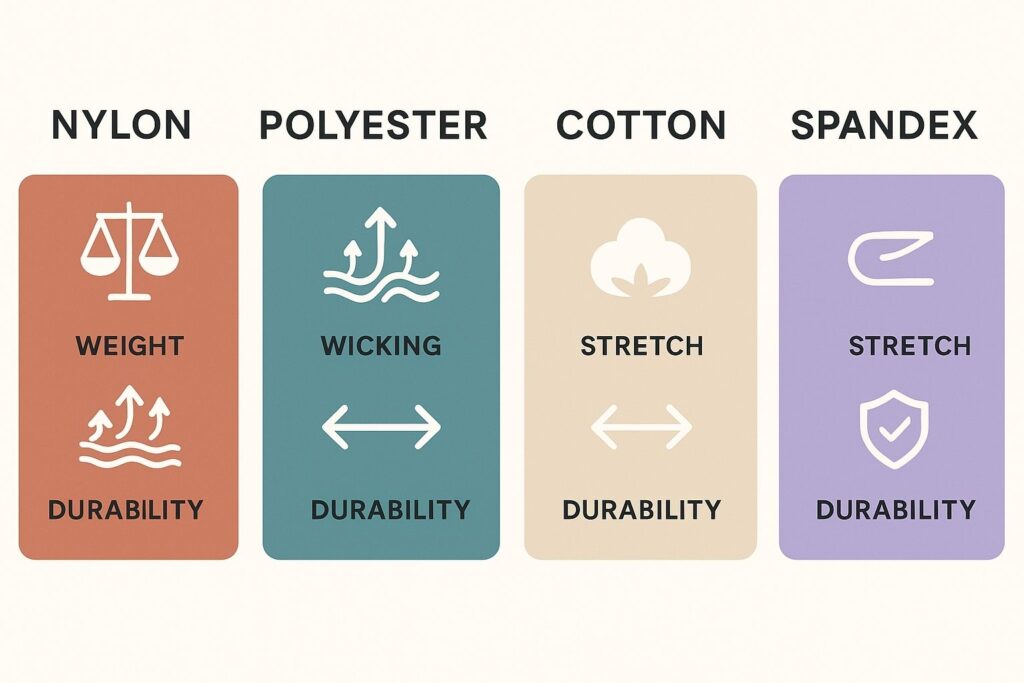
Style and Versatility in Men’s Wardrobe
Running gear that moonlights for coffee runs saves closet space. Modern nylon shorts often feature streamlined silhouettes, tonal colors, and matte finishes that pair easily with hoodies or casual tees.
Styling tips:
- Opt for 7‑inch inseams in muted shades (charcoal, navy) for a surgical strike between athletic and street.
- Combine with a lightweight bomber or oversized cotton tee to nail the athleisure aesthetic.
- Choose models with laser‑cut hems and hidden zip pockets; these details read “techwear” rather than gym‑only.
Look for branding kept to a subtle reflective hit on the leg so your shorts don’t scream “race day” at brunch. Minimalism lets nylon’s function double as fashion.

When to Choose Nylon Shorts Over Others
- Trail running: Branches and grit can shred thin polyester; nylon’s abrasion resistance shines.
- Rainy miles: Water beads and rolls off instead of soaking in, cutting chill on wet long runs.
- Humid climates: Rapid evaporation keeps skin drier than cotton or heavy spandex.
- Travel packing: Two pairs weigh less than a cotton T‑shirt and dry overnight in a hotel sink.
Quick Purchase Checklist
- ☐ 100 % nylon or 90/10 nylon‑spandex mix for stretch
- ☐ Flat, bonded seams to minimize chafe
- ☐ Breathable liner or liner‑less if you wear compression shorts
- ☐ 5–7‑inch inseam that suits your stride and off‑duty style
- ☐ Secure zip pocket for keys or card
If those boxes tick, nylon shorts can anchor a minimalist, performance‑first wardrobe.

Conclusion
Nylon shorts earn their reputation by fusing feather‑light feel, near‑instant drying, and impressive durability—qualities every runner values. They do fall short on stretch and, if poorly ventilated, may smell after steamy sessions. Compare them against polyester for budget, spandex blends for mobility, and cotton for post‑run lounging, and their sweet spot becomes clear: mileage under variable, often sweaty conditions where speed and resilience matter most.
Choose a thoughtfully designed pair—secure pockets, chafe‑free seams, appropriate liner—and nylon shorts can graduate from race‑day staple to everyday essential in a modern man’s athletic lineup.
